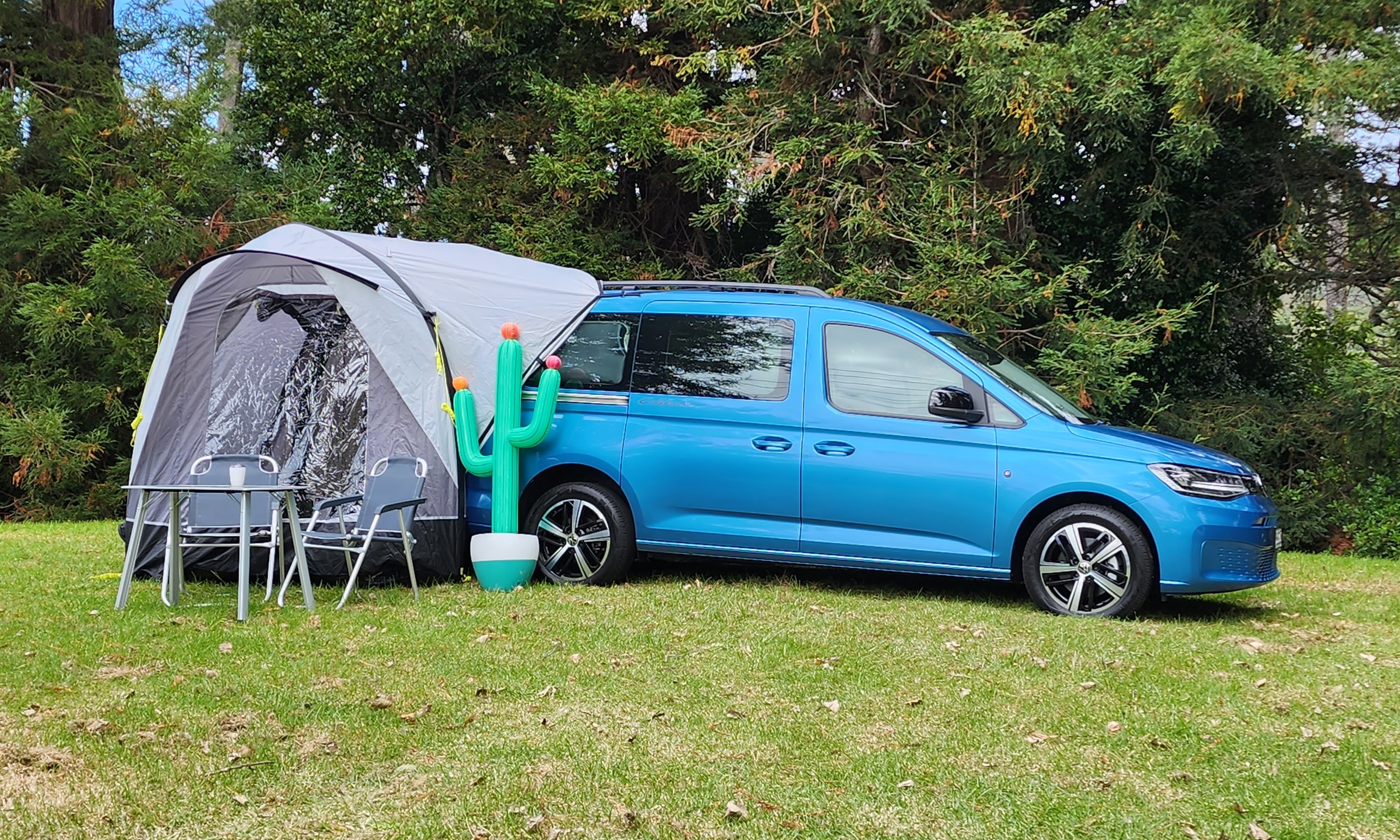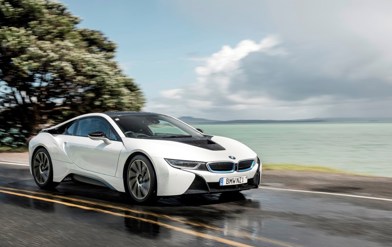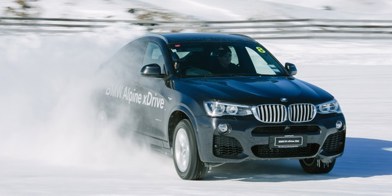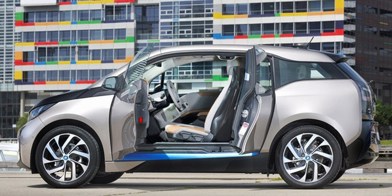The Caddy is the smallest of Volkswagen’s three-tier California-branded factory campervan range, but at $70k it’s always been quite a lot of multi-purpose vehicle for your money.
VW New Zealand is ramping up the value equation quite a lot at the moment. The price is down to $62,990, but the specification has gained an inflatable tent and three-year service plan (normally $1395).
It’s probably not for everybody, but as a car-slash-van-slash-occasional bedroom, the Caddy is an impressively well thought-out piece of kit.
As a "car", it’s a pseudo-commercial vehicle that’s still pretty good to drive. Very Golf-like (that’s what it is underneath, really), with decent ride and road manners – save the occasional creaking and groaning from the camper stuff when you go over big bumps or around tight corners.
It has VW’s latest digital dash and touch cabin controls, which may or may not be to your taste. But the point is, it feels very modern.
Maybe it’s the techy looking front under-bumper panel, but loads of people still asked if it was electric. No such Caddy, sadly.
But you’re not here to read about the Caddy’s driving characteristics, are you?
The California is based on the standard long-wheelbase Caddy passenger van, so you get the five-seat layout (foldable/removable split second row) with the collapsible bed mounted behind. It’s still a pretty practical midi-people mover even with everything installed in the cabin, but you can of course remove the bed completely if you want maximum cargo space. And yes, you can leave the rear seats in place (folded) and still use the bed, so if you’re camping you still have a five-seat vehicle to use when you’re running around making friends.
Speaking of which. Despite (or perhaps because of) the Germanic precision with which the campervan stuff has been incorporated into the available cabin space, going from driving to sleeping does require quite a methodical approach – especially if you’re doing it solo.
To extend the bed, the front seats have to be rolled as far forward as they can go and the backrests wound all the way towards the dashboard. All. The. Way. It’s all manual by the way, which is why power adjustment and memory would be a boon. That’s not available, but we’d definitely go the power latching for the side doors ($600).
Anyway, the bed comes out in a concertina type of movement, with a spring-loaded, angled leg each side clipping into the car’s pillars at the front – meaning it kind of “floats” there, but fully supported. Clever.
The trick is, there’s no surplus room between it and the seatbacks, so you have to unfold the bed at the correct height and somehow extend/clip the legs in one smooth action. You can’t assemble the bed to full length and then bring it up to mount, because there isn’t room behind the seats. It’s easy enough with two (one each side), a bit of an acquired skill with one.
Once it’s set up… absolutely brilliant. The bed is long and the mattress (with plastic springs) is similar thickness to what you get in the larger Californias, so it’s a decent sleep station. It’s great for one, technically a two-berth – but you’d have to be very special friends.
Even with the bed installed, there’s lots of storage space, including underneath in the passenger compartment and in the boot. Curtains of course, removeable soft lockers that hang on the side windows and even plastic vents that fit on the front windows (you wind the glass up underneath to seal them) to keep air flowing through the cabin.
No Cali, not even a compact one, is complete without a table and chairs, which fold neatly flat and stow in a bespoke bag in the boot.
The complimentary inflatable tent is another draw, of course. It can take the Cali setup from two to three-or-more-berth, so you really could fill those five seats on a weekend trip.

The tent being given away isn’t a VW product – it’s the Tailgater Air model from British company Kampa, and retails for just over $1000 depending on where you buy.
You blow up the frame in sections; it can be done with a hand pump, although we had a powered compressor that plugged into the 12-volt socket in the Caddy cargo bay. It requires the usual fiddling that comes with any tent – get the ground sheet organised, get the tent upright, get everything pegged and secure.
It’s freestanding if you want it to be, but the beauty of tents like these is that you can attach them to the open tailgate (hence the name) and make the car part of your home away from home. Again, there are a few logistics in getting the tent strapped to the car (wheelarches, roof rails, wherever you can find a good mounting point), but the cool thing is you can also drive away and leave the tent standing for when you return.
Given the Caddy California is more a brilliantly executed car you can sleep in than a full campervan, the addition of the tent takes it one step closer to that full camping setup that a family or friends can enjoy.
This most compact Cali is a real feelgood machine with an iconic name and even looks pretty cheerful in some of the bright hues offered by VW. One wag did point out that our test car’s striking Costa Azul Metallic colour looked a bit Driving Miss Daisy spec (yes, there are blue Caddys on the DMD fleet); fair call, but Miss Daisy should be so lucky to have an awesome weekend away.


